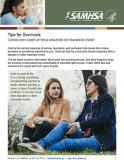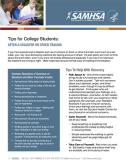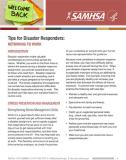
This tip sheet contains information about grief, the grieving process, and what happens when the process is interrupted and complicated or traumatic grief occurs. It also offers tips and resources for coping with both types of grief.
Units per Product
Download
Coping with Grief After a Disaster or Traumatic Event
File Type: PDF
File Size: 2.59 MB







